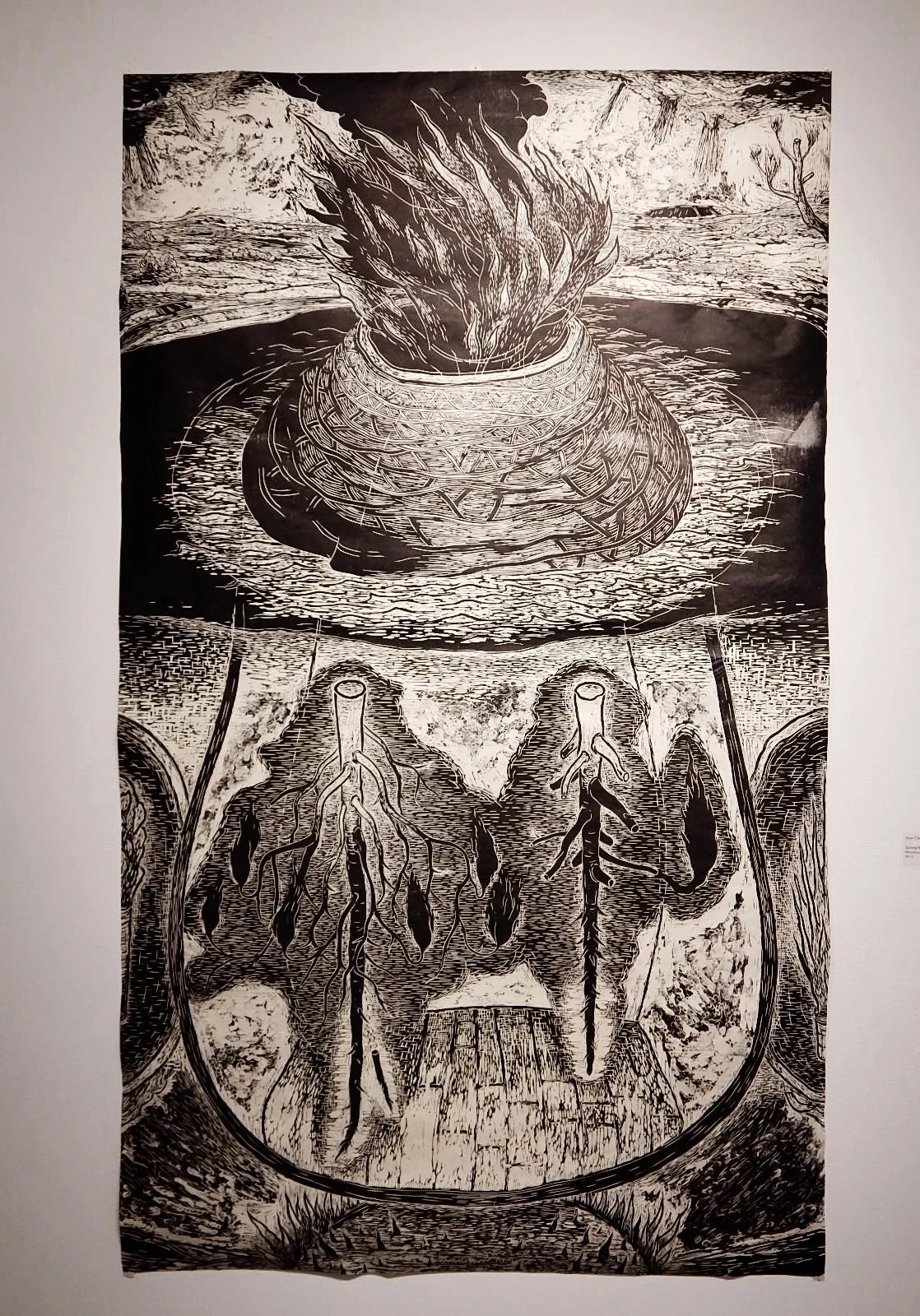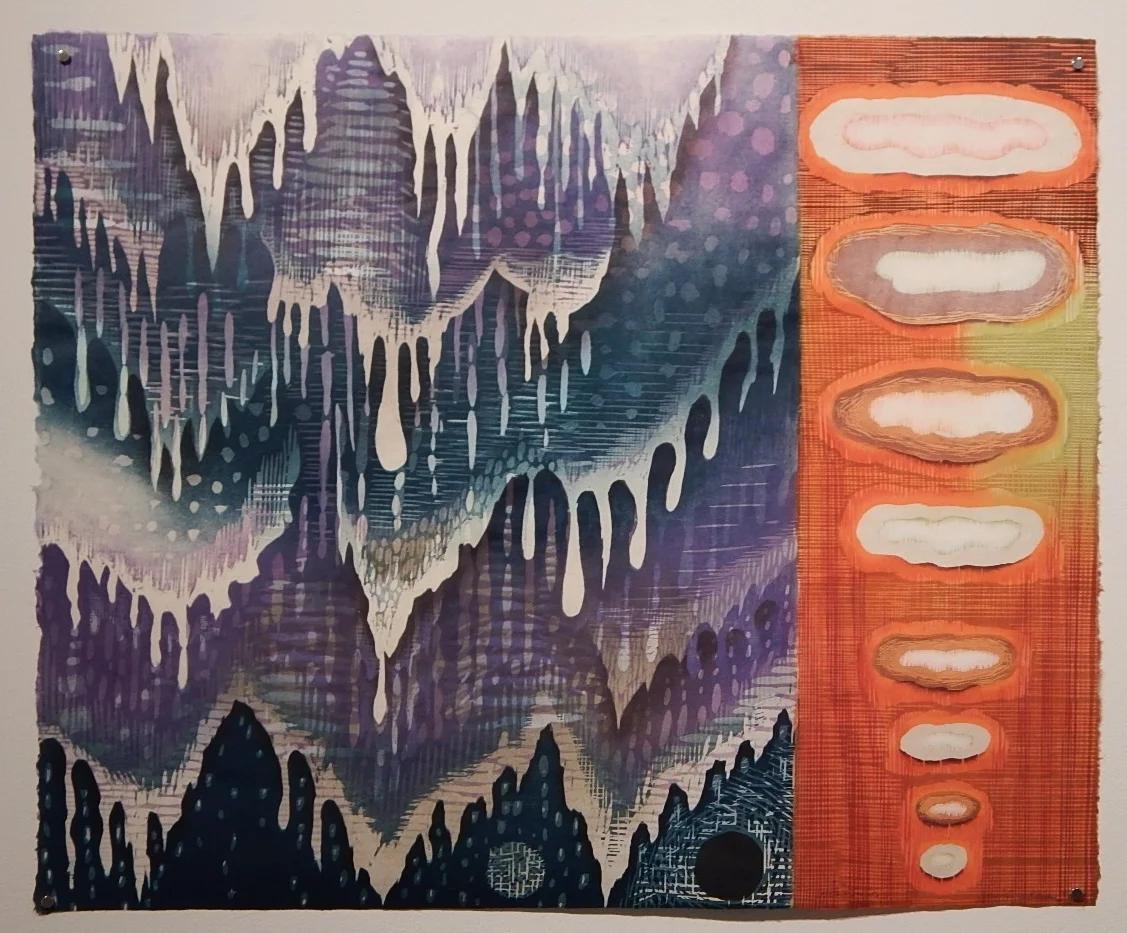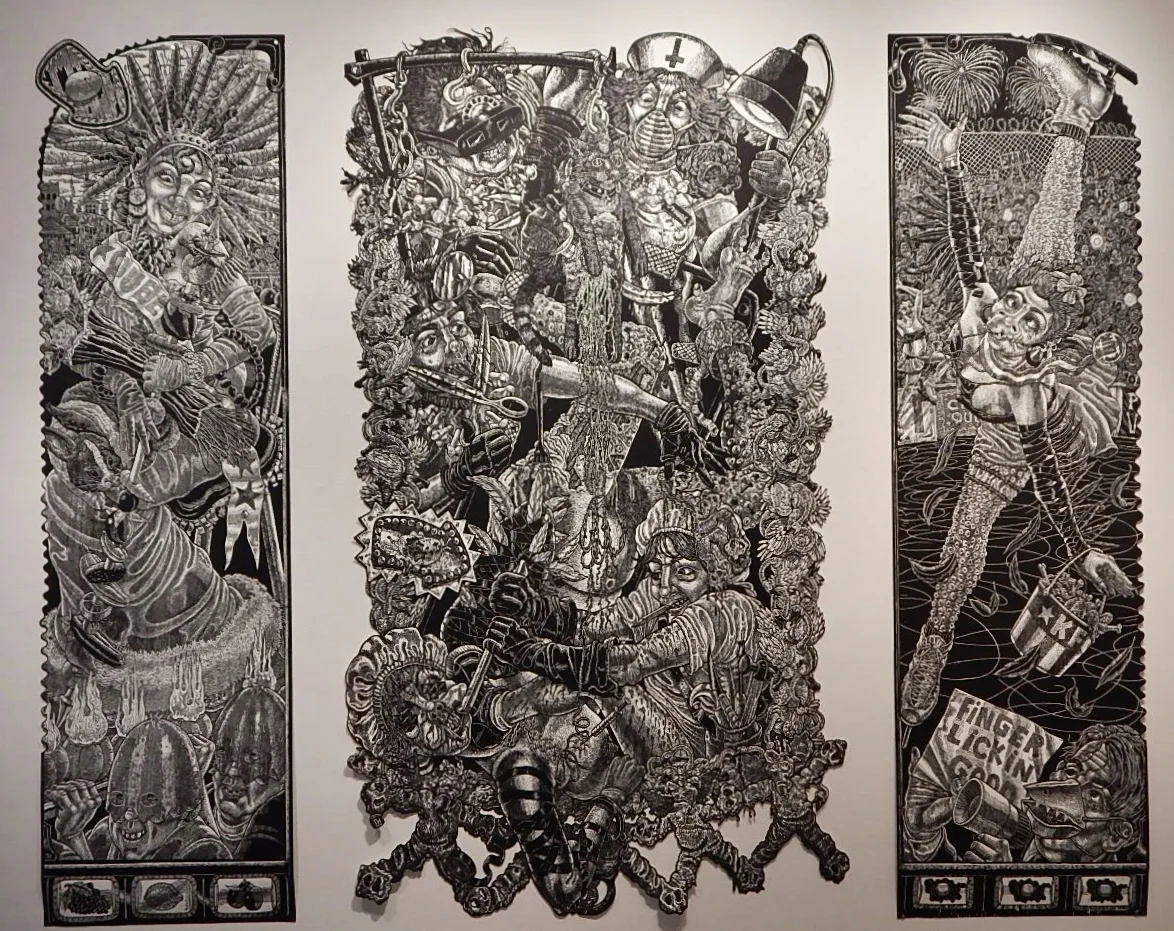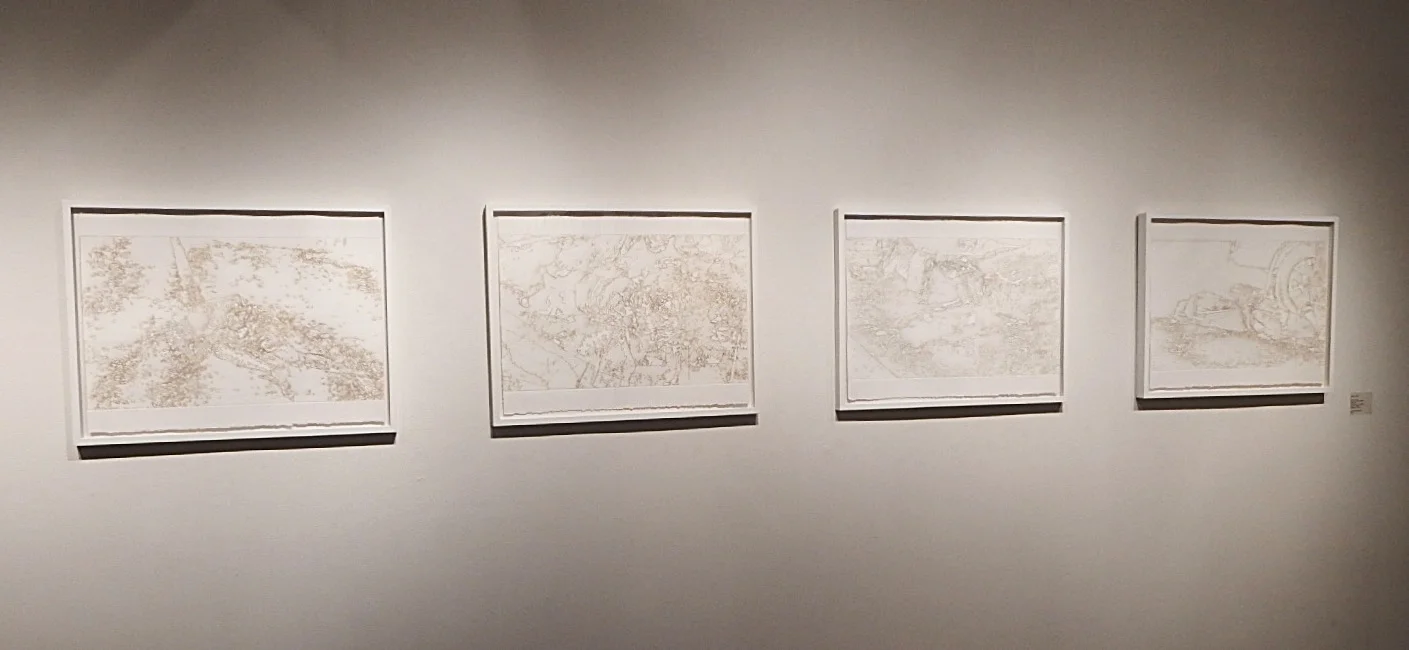From intricate wood prints to windows, the new Schick exhibit, “Pressed: Six Contemporary Printmakers,” has something for every viewer. The show, which opened during celebration weekend, has an atmosphere of self expression, often speaking towards social change and a need for an artistic revolution to express how the environment around us is evolving into something new and daunting. Each artist displays parts of their lives in their work, allowing viewers to almost become part of the artist themselves. Read more about each featured artist and their work below!
Kathryn Polk, Beside Myself, Lithograph, 2014
Kathryn Polk
Kathryn Polk centers her work around female figures, representing the bodies in absurd ways. In one of her pieces, two women are drawn in a pencil sketch style standing next to each other looking toward the sky. Their arms are outstretched in front of them with red lines leading from their fingertips to their feet. There's an eerie sense to the piece, almost as if the women are possessed by an unknown force. The figures have red halos around their heads and red fingers, which gives the overall grey print contrast and creates an engaging viewer experience. Polk’s other pieces contain similar elements, ranging in color from grey black prints to vibrant color, all surrounding women and absurdism.
Sean Caulfield, Burning Roots, Woodcut, 2014
Sean Caulfield
In the exhibit, artist Sean Caulfield displays some small pieces in cases, which were accompanied by a poem that gave the image another layer of artistry. His larger pieces on the wall were from a series of his work called “Floods and Shelters.” Caulfield takes his inspiration from environmental challenges around us, like tornados, fire and volcanic eruptions. The prints appear to erupt out of the image, and his smaller pieces are similar replicas of the larger prints, except for their overall shading, which is darker in color.
Karen Kung, As if, As Though, Woodcut, 2012
Karen Kung
Karen Kung creates a uniformity in the style of her work, while making each one of her pieces different and unique. The pieces are vibrant in color and bring to life the abstract way of the world, while focusing on the environment. In her piece Water and Smoke, Kunc’s print is split between two parallels; the majority of the image is taken over by a dripping purple and white panel falling toward the ground, while a column on the edge is rising in puffing, oblong, grey-white shapes, ascending over an orange background.
Tony de los Reyes, The Transformation of Brandy Baghead, Woodcut, 2009
Tony de los Reyes
Tony de los Reyes, another artist featured in the exhibit, has a panel of six prints, all of which showcase oddly constructed windows. Look into those windows, and viewer’s will find muted scenes which appear to be deserted, except for shrubbery along some edges. These prints have a sense of mystery and wanting, which helps los Reyes grab viewers to then bring to light the need for focus on our environment.
Tom Huck, The Transformation of Brandy Baghead, Woodcut, 2009
Tom Huck
Tom Huck is known for creating satirical, intricate wood prints. His work has been shown in many different museums and art galleries — such as the Whitney Museum of American Art and the Art Institute of Chicago — and featured in The Village Voice and the Minneapolis City Pages. His pieces on display are large graphic prints that are separated into three panels, creating a story. The piece on display is called The Transformation of Brady Baghead, more about the actual piece.
Miguel Aragon, Brutal Enfrentamiento, Burnt residue embossing, 2013
Miguel Aragon
Miguel Aragon’s pieces create an environment like a topographical map, each muted in color. Upon closer look, Aragon forms scenes that can be perceived as islands scattered across an ocean, or mountain ranges forming out of the earth. They tempt the viewer to run their fingers over the ridges to feel the roughness and unevenness of the texture the print creates.
The exhibit is a must see and can be visited until Nov. 28.





